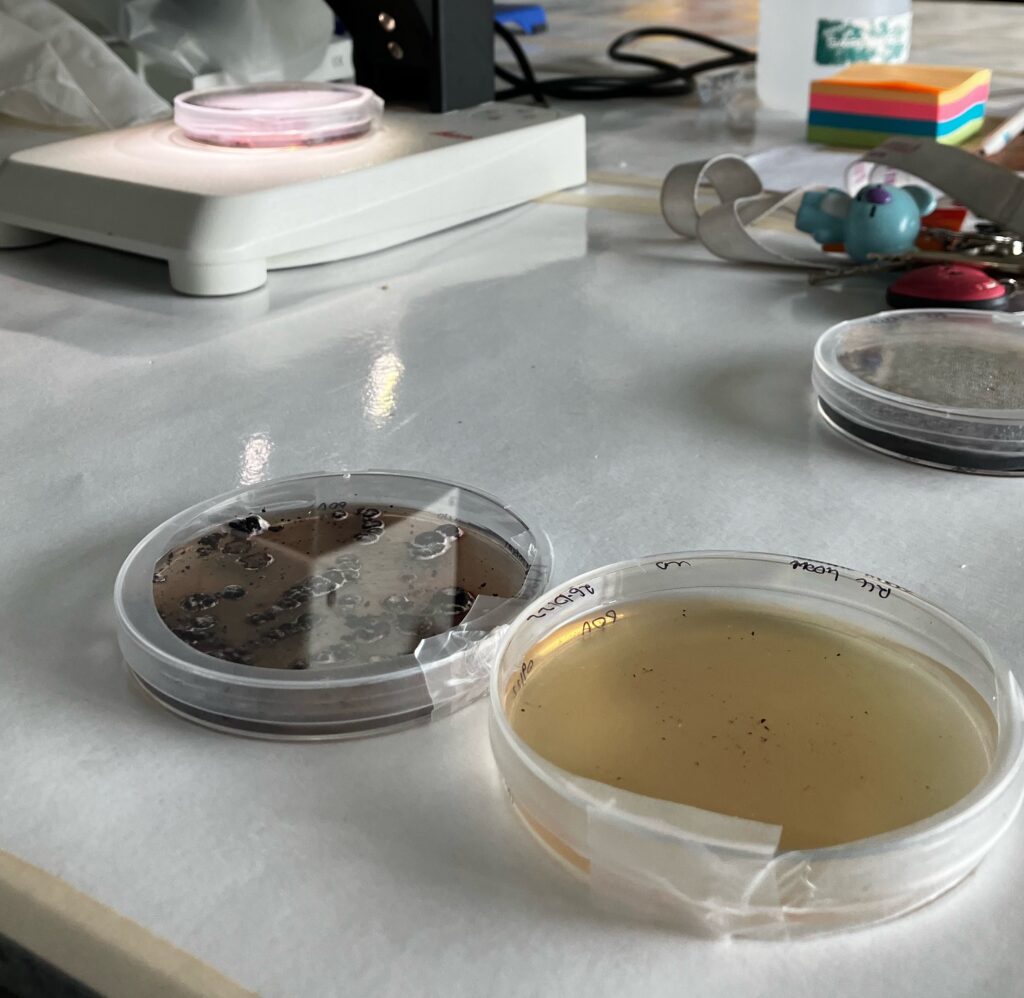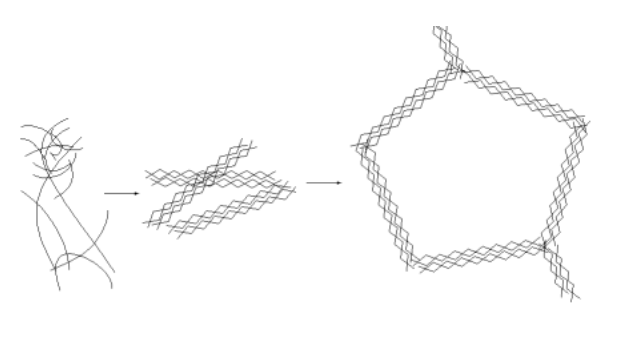
Agar gels due to the presence of the agarose fraction in the crude agar, at typical concentrations between 0.5% and 2.0%. Unlike carrageenan, agar does not require the presence of any particular ions to gel. One of the classic uses of agar is for the preparation of microbial plates where the combined properties of low syneresis, no dependence on ions and low set temperature make agar ideal.
Agar has a uniquely high hysteresis between its melting and setting temperature. Typically, agar needs to be heated above 900C to form a good solution and depending on the seaweed source the setting temperate can be as low as 300C but is typically between 30-450C for a 1.5% solution. To overcome the very high dissolution temperature of agar, several companies manufacture a form of agar that has been specially dried to allow the agar to dissolve at lower temperatures.

According to Rees agar forms antisymmetric double helices on cooling that hydrogen bond to form clumps of helices. These clumps can then form larger groupings that from a large porous gel structure. Agar is known to form a very porous gel and the pore size can be roughly measured by assessing the size of particulates that are excluded from the gel in a gel permeation experiment. It has been shown that agar gels can allow molecules up to 30M daltons in size to percolate through it structure. An agar gel as the unusual property of behaving like a sponge. An agar gel of a particular shape can be dried and upon rehydration it will swell to its original size and shape.
Unlike some other hydrocolloids, agar does not show many commercially significant synergistic properties. It does show synergy with sucrose and this is exploited in some confectionery products. Gelidium agar is known to form a small synergistic interaction with locust bean gum that is not seen in products based on Gracilaria. Synergy has been reported between low gel strength agar and guar gum in a patent by Rachid Lebbar of Setexam. Agar is reasonably acid stable compared to other polysaccharides and does not show any protein reactivity. It can be used in acidic dairy products such as yoghurts where carrageenan would cause excessive flocculation due to the protein reactivity of the carrageenan.
Further information on agar structure and production can be accessed using the arrows in the Further Reading box below.
Further Reading
Read more on Agar
